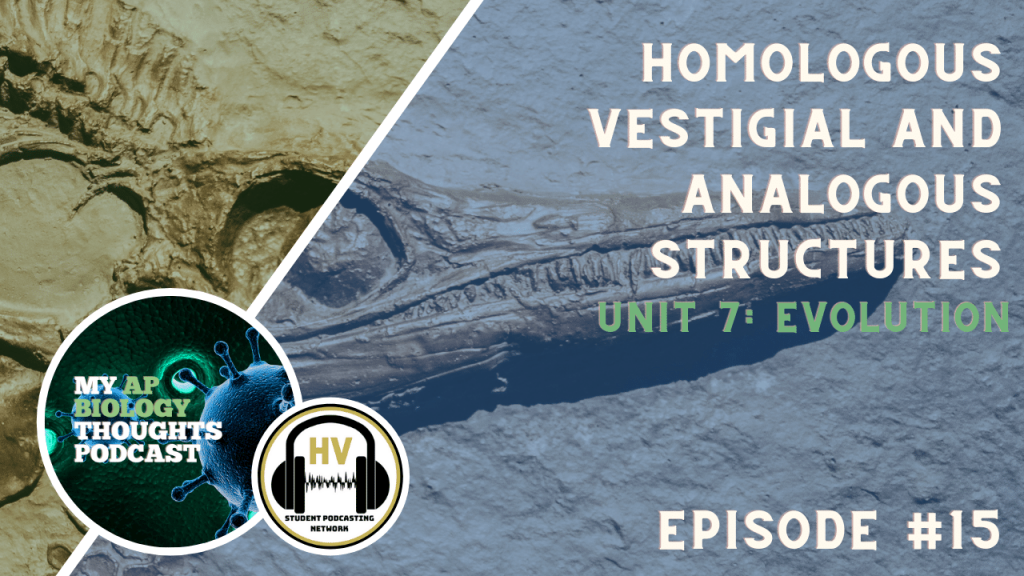Homologous and Analogous Structures

My AP Biology Thoughts
Episode #15
Welcome to My AP Biology Thoughts podcast, my name is Alex Jing and I am your host for episode 15 called Homologous Vestigial and Analogous Structures. Today we will be discussing what these different structures are and how they relate to evolutionary biology.
Segment 1: Introduction to Homologous Vestigial and Analogous Structures
- So, what are homologous, vestigial, and analogous structures? Each of these terms refers to the structure of something about an organism in a different way.
- Homologous structures are organs or skeletal elements that, due to similarity, suggest that they come from a common ancestor. These structures do not necessarily look the same, but are instead just structurally similar.
- Analogous structures are similar structures that evolved to serve the same purpose. These structures were not from some common ancestor, but instead were developed in multiple species independently to adapt to a similar environment.
- Vestigial structures are remnants of some past feature of the organism that is no longer useful. It usually occurs when a species inhabits a new environment, or is in a new niche, that does not require an old structure.
Segment 2: Example of Homologous Vestigial and Analogous Structures
- An example of a Homologous structure are the wings of birds. The wings of birds come from some evolutionary ancestor, but have become diverse due to different birds needing different wings for their environment. Many predatory birds have wings that are specifically good at catching air so they can accelerate fast enough to catch prey. On the other hand, smaller birds that get sustenance off of fruit have wings that work better when flapping, and are used to maintain stability while eating in the air.
- An example of an analogous structure are the wings of a penguin and the flippers of a seal. Antarctica is a cold, barren environment, filled with sheets of ice and freezing water. Both the wings of a penguin, and the flippers of a seal were adapted to inhabit this environment. Despite the structure not coming from a recent ancestor, both animals use these limbs to be able to both traverse slippery ice, and swim in freezing water.
- An example of a vestigial structure is the leg bone of a whale, where despite being a waterbound creature, it has remnants of a limb that was used for movement on land. This is because whales came from an ancestor that is shared with pigs. This ancestor was a land animal, but since whales only swim, they did not need this leg anymore. Due to lack of use, this limb became a smaller and smaller part of the whale, and eventually came to be this small separated bone in the whale’s skeleton.
Segment 3: Digging Deeper Homologous Vestigial and Analogous Structures
- Now why are these things important? Well, these structures are extremely useful for understanding the evolutionary history of animals. Homologous structures are useful for studying divergent evolution. Some traits that come from an evolutionary ancestor appear on multiple different organisms, but are changed through adaptations for each individual species. Analogous structures are useful for studying convergent evolution. Species that migrate to a new area need certain adaptations to survive, no matter what species they are. Vestigial structures, similar to homologous structures, are also useful for studying divergent evolution. Vestigial structures can show how a species no longer requires some trait passed down from their ancestors, usually due to a new environment that has no need for this trait.
Thank you for listening to this episode of My AP Biology Thoughts. For more student-ran podcasts, make sure that you visit www.hvspn.com. Thanks for listening!
Music Credits:
- “Ice Flow” Kevin MacLeod (incompetech.com)
- Licensed under Creative Commons: By Attribution 4.0 License
- http://creativecommons.org/licenses/by/4.0/

